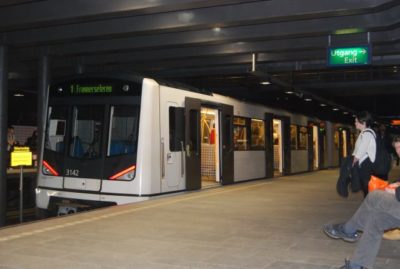Oslo promotes an image of itself as a climate-minded capital, but fares for public transport remain much higher than in most other cities around the world. Now the tolls charged for using private vehicles are going up again, too, with little incentive for commuters to take the metro, bus or tram instead.

While other cities around Europe are lowering their mass transit fares, or even eliminating them and letting the public ride for free, Oslo-area commuters are getting hit on all sides. News service FriFag-bevegelse reported last week how a monthly transit pass from outlying suburbs of Oslo into downtown now costs NOK 2,074 (USD 211). That’s much higher than what it cost to travel this summer in all of Germany (EUR 9 for an extraordinarily low monthly pass also good on trains in August), where proposals now call for a monthly national transport pass equivalent to around USD 70.
A single-fare ticket bought in advance in Oslo, meanwhile, now costs the equivalent of nearly USD 4, enough to make many think twice before taking the bus, for example. A group of four could be better off taking a taxi or driving, if their destination is within the same toll region and they can avoid high parking fees.
Most other cities are also lowering mass transit fares. The goals are to reduce the currently high costs of living given record-high energy costs and inflation, to reduce carbon emissions and lure the public back to public transport after the Corona crisis. Germany has been among the most generous, while FriFagbevegelse reports that Spain is extending free train fares on several lines through the end of the year and cutting local transit fares by 30 percent. Ireland has cut fares by 20 percent while Austria now issues a cheaper “climate ticket” good nationwide. Luxembourg has offered free public transport since March 2020, and it’s been free in the Estonian capital of Tallinn since 2013.
Ruter, the publicly owned company running the bus, tram and metro system in the Oslo metropolitan area, defends its high fares as necessary to cover high costs and recover from Corona-related losses. Political officials, meanwhile, have refused to offer Ruter more funding.
Raising tolls instead of lowering fares
The City of Oslo has also responded by merely boosting the already-high tolls charged private vehicles for driving between various zones in the capital. Newspaper Dagsavisen reports that even though tolls have quadrupled in the past 14 years, according to the state transport economics institute TØI, they’re going up again this week. Even zero-emission vehicles like electric cars will see their tolls rise by at least NOK 6 if not more, with the various tolls charged various types of vehicles going up between 20- and 100 percent.
TØI researcher Askill Harkjerr Halse notes that tolls initially were imposed to help cover the costs of new roads. “In the cities, they’re now used also as a means of regulating automobile use, in addition to helping fund mass transit,” Halse told Dagsavisen. The biggest losers, he says, “are those with relatively poor household economy but who depend on their cars to get to work.” That’s ironic, given Oslo’s Labour Party-led government that’s supposed to champion low- to moderate income workers.
Norway’s National Automobile Federation (NAF) is protesting the latest increase in tolls. It wants the state to secure financing of new transport projects instead of forcing local governments to keep raising tolls. “We’re reacting because it’s almost impossible for Norwegian families to avoid tolls if they need their cars for everyday errands,” Ingunn Handagard of NAF told Dagsavisen. She notes that TØI’s research shows that applies to 44 percent of Norwegian households, and that tolls hit lower-income households much harder than those with high incomes. Not everyone can walk or ride their bikes to work, either.
The state should also help finance local mass transit systems to a higher degree, claims NAF. Tolls in Oslo, Handagard notes, won’t differentiate as much depending on travel during or outside commuter rush periods. That, she said, shows that the money raised will be used to help finance mass transit, not just to discourage drivers from driving to work. “This first and foremost is all about raising more money that should be provided by the state,” Handagard said.
newsinenglish.no/Nina Berglund

